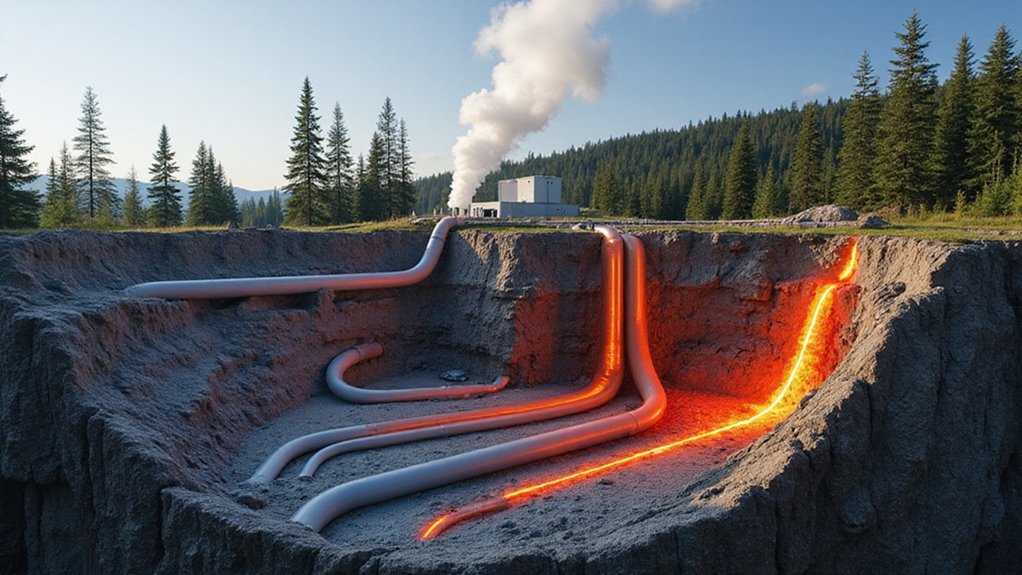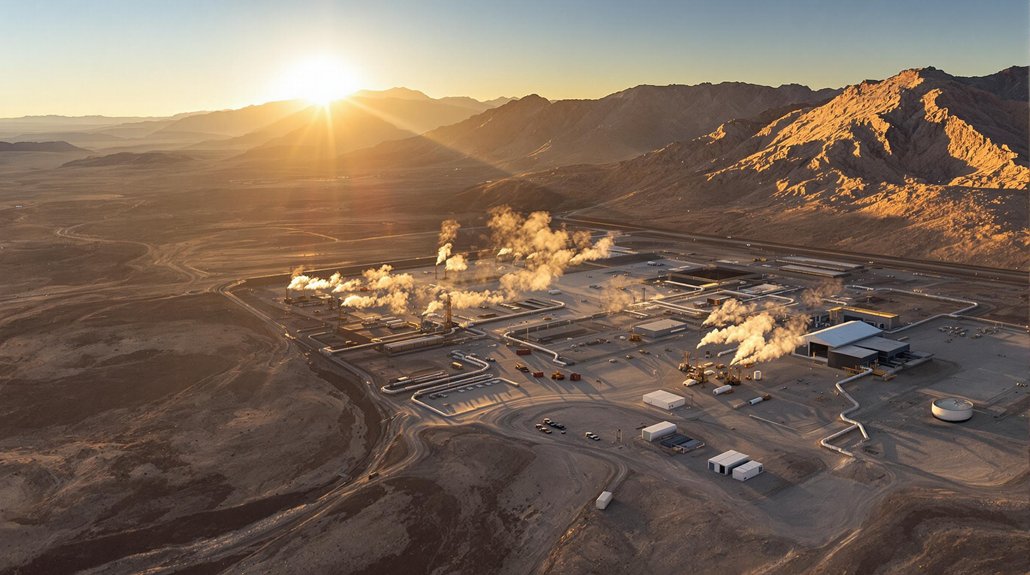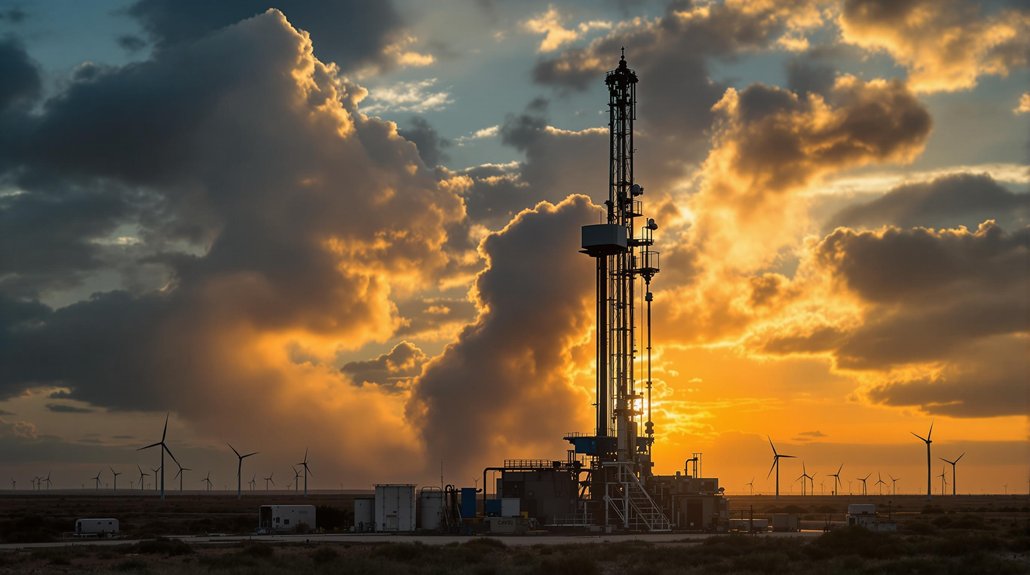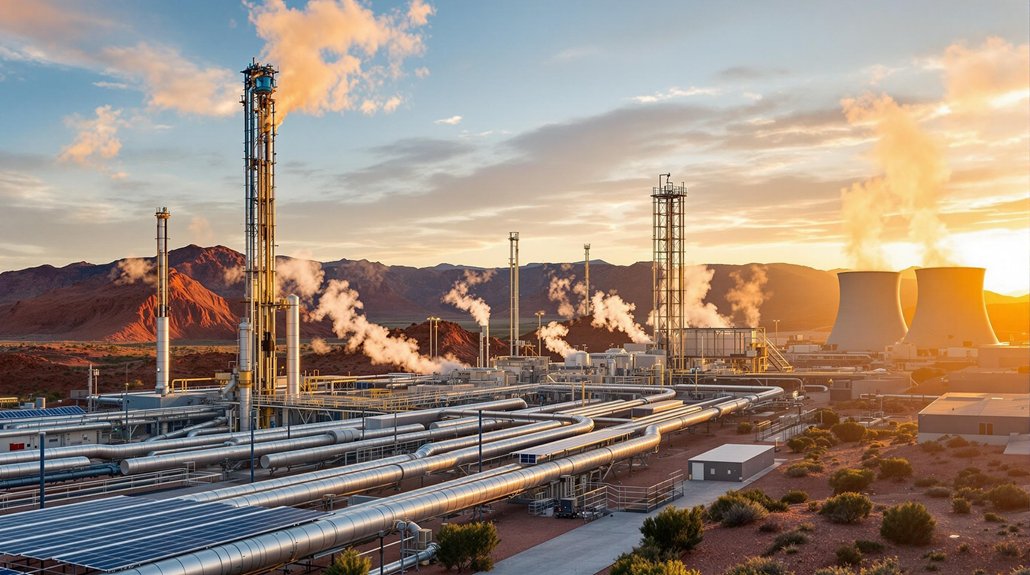Closed-loop geothermal isn’t just hot air. This technology taps Earth’s heat through sealed pipes, making 98% of previously inaccessible geothermal energy usable anywhere with sufficient depth. No reservoirs needed. No weather-dependent nonsense. With a 96% capacity factor, it delivers consistent power 24/7 while maintaining zero emissions. Projects are popping up globally, from America to Japan. The systems last over 50 years – longer than most marriages. The clean energy transformation runs deeper than you think.
Transformation doesn’t always come with a bang. Sometimes it’s buried miles below our feet, quietly changing how we power our world. Closed-loop geothermal systems are doing just that—tapping into Earth’s heat without the drama of conventional energy sources. No reservoirs needed. No groundwater contamination. Just sealed pipes carrying fluid through hot rock. Simple, really.
Revolution happens quietly underground—geothermal power harnessed through sealed pipes, without fuss or environmental drama.
The concept works everywhere. That’s the kicker. Unlike traditional geothermal that needs specific hotspots, closed-loop systems can be installed practically anywhere with sufficient depth. The math is staggering: 98% of global geothermal energy has been inaccessible until now. Not anymore.
These systems come in different flavors—U-tube, coaxial, vertical, horizontal. Whatever fits your geological situation. The working fluid—usually water with antifreeze—circulates in a continuous loop, picking up heat from surrounding rock and delivering it topside. One fill, endless reuse. No leaks, no waste.
What’s the big deal? Consistency. While solar panels sulk on cloudy days and wind turbines throw tantrums in still air, geothermal keeps pumping. Day, night. Rain, shine. Doesn’t matter. The earth doesn’t care about weather forecasts. With impressive capacity factors of 96%, geothermal systems provide reliability that other renewables struggle to match.
Environmental impact? Minimal. The surface footprint is tiny, especially with vertical configurations. Zero emissions during operation. No chemical discharge. Just clean, renewable energy that keeps on giving.
Projects are popping up across the globe. The U.S., Canada, Japan, Germany—all betting on this technology. And why wouldn’t they? It works for utility-scale power and for heating your local high school gym.
The closed-loop approach solves geothermal’s traditional limitations. No more hunting for rare permeable reservoirs or worrying about depleting natural hot springs. It’s geothermal democratized—available to regions previously left out of the geothermal party. These systems significantly reduce risk of induced seismicity compared to conventional geothermal technologies. The remarkable 50+ year lifespan of closed loop ground systems makes them an exceptionally durable energy solution compared to other renewable technologies.
Earth’s been storing this heat for billions of years. We’re finally smart enough to use it properly. Without the mess. Without the fuss. Just limitless power, hiding in plain sight beneath our feet.
References
- https://en.wikipedia.org/wiki/Closed-loop_geothermal
- https://dandelionenergy.com/open-loop-vs-closed-loop-geothermal-systems
- https://geothermal.org/our-impact/blog/new-opportunities-and-applications-closed-loop-geothermal-energy-systems
- https://iwae.com/resources/articles/open-loop-vs-closed-loop-geothermal/
- https://kochergeowelldrilling.com/different-types-of-geothermal-systems/








